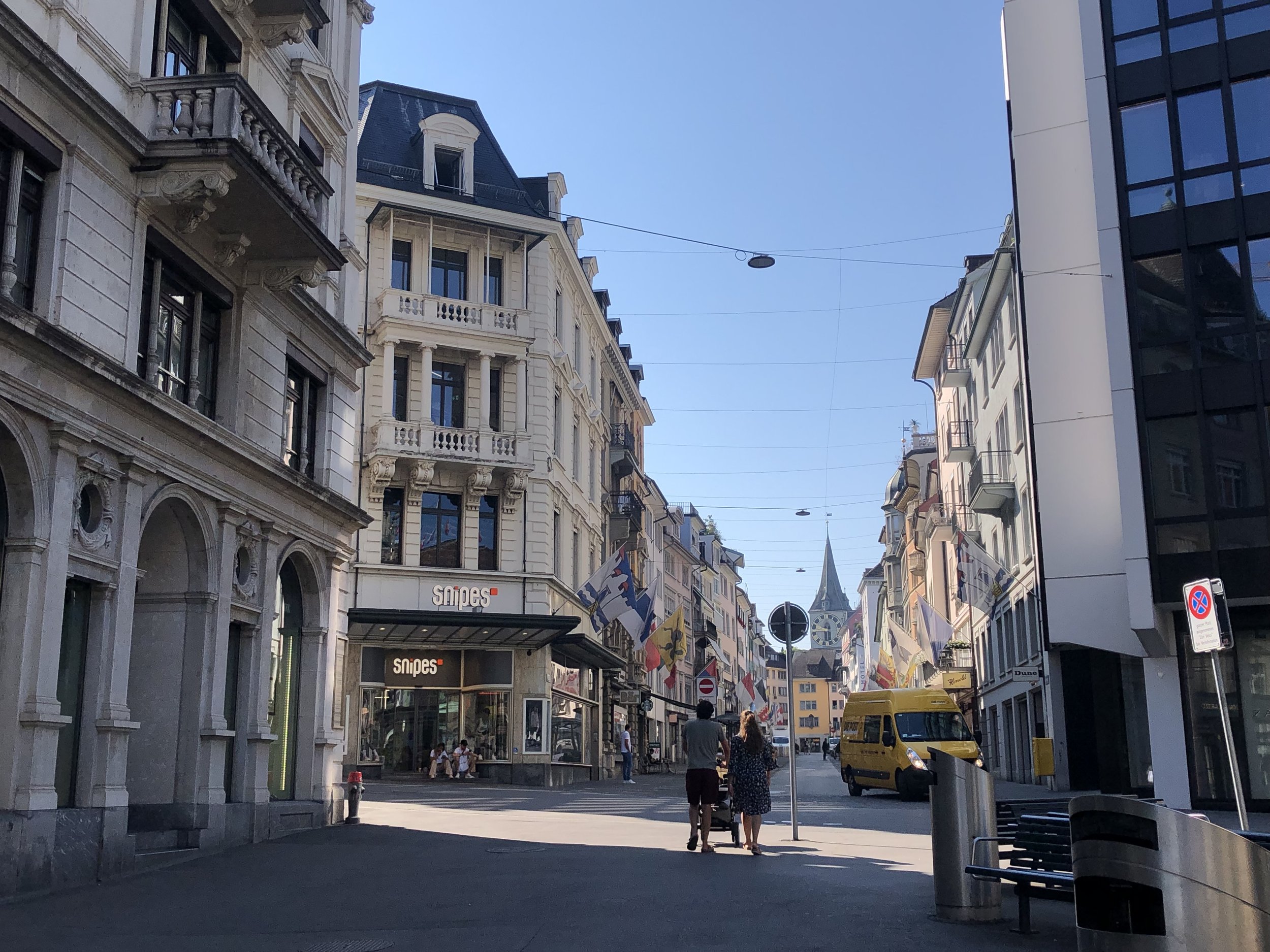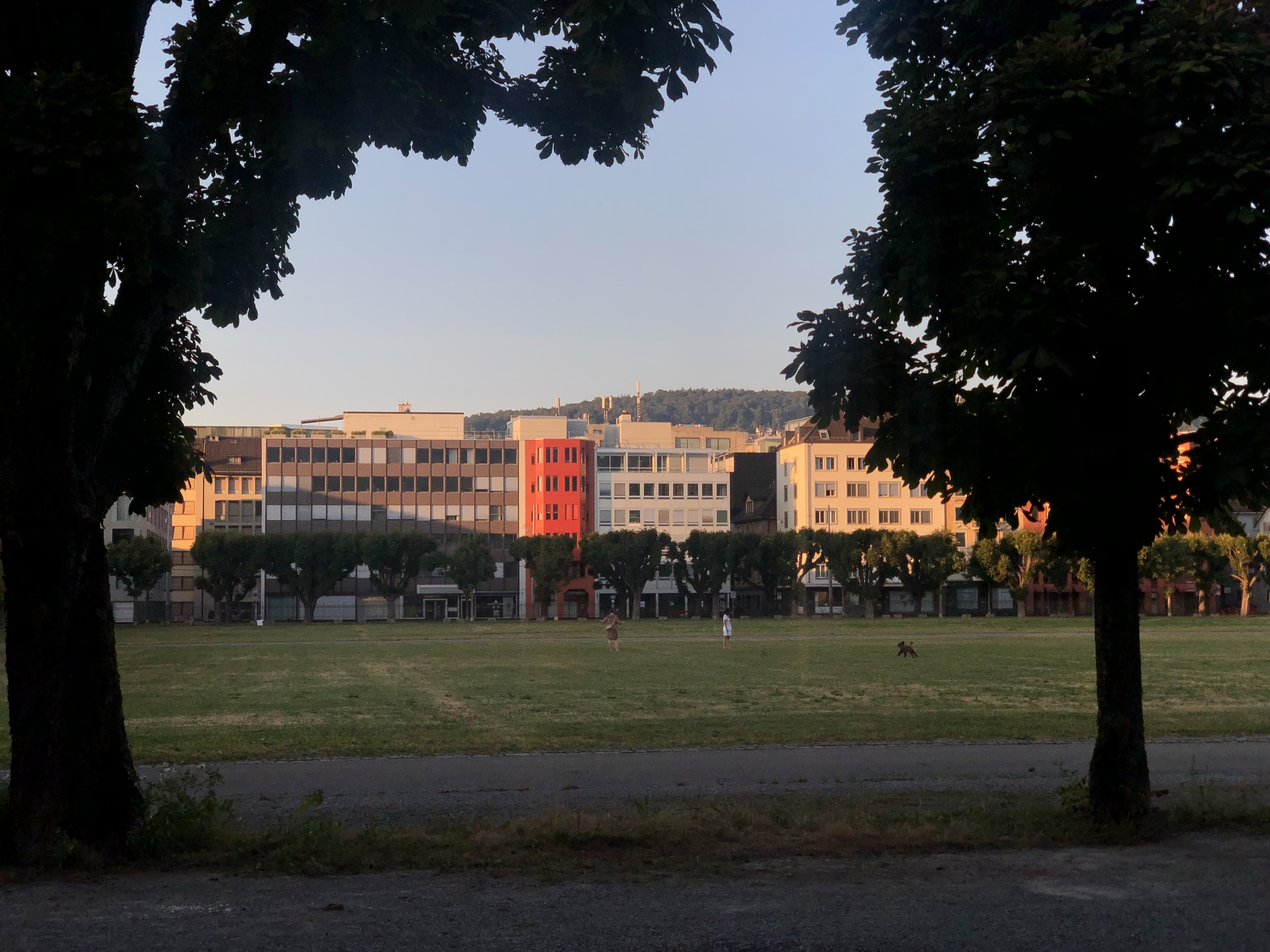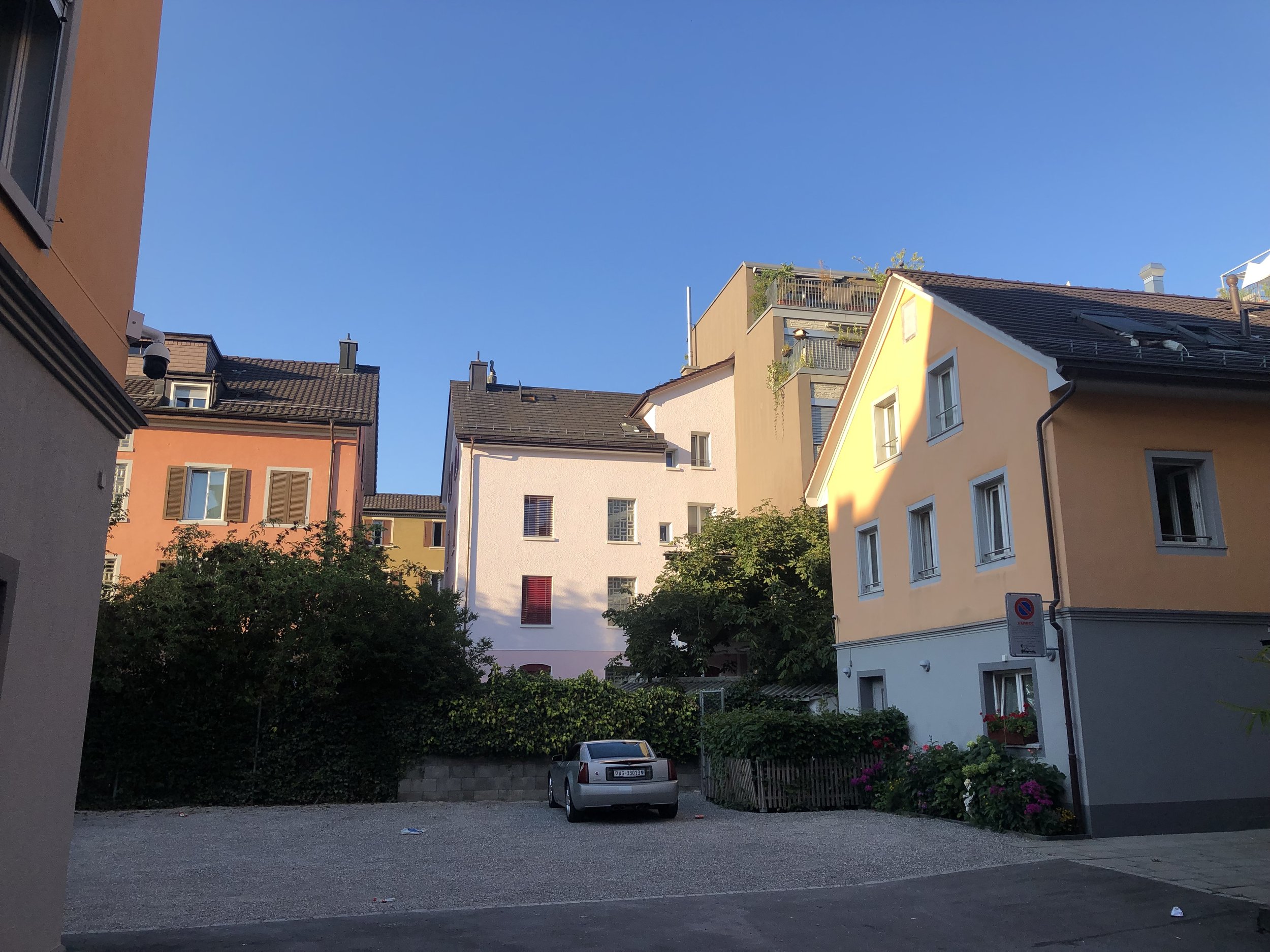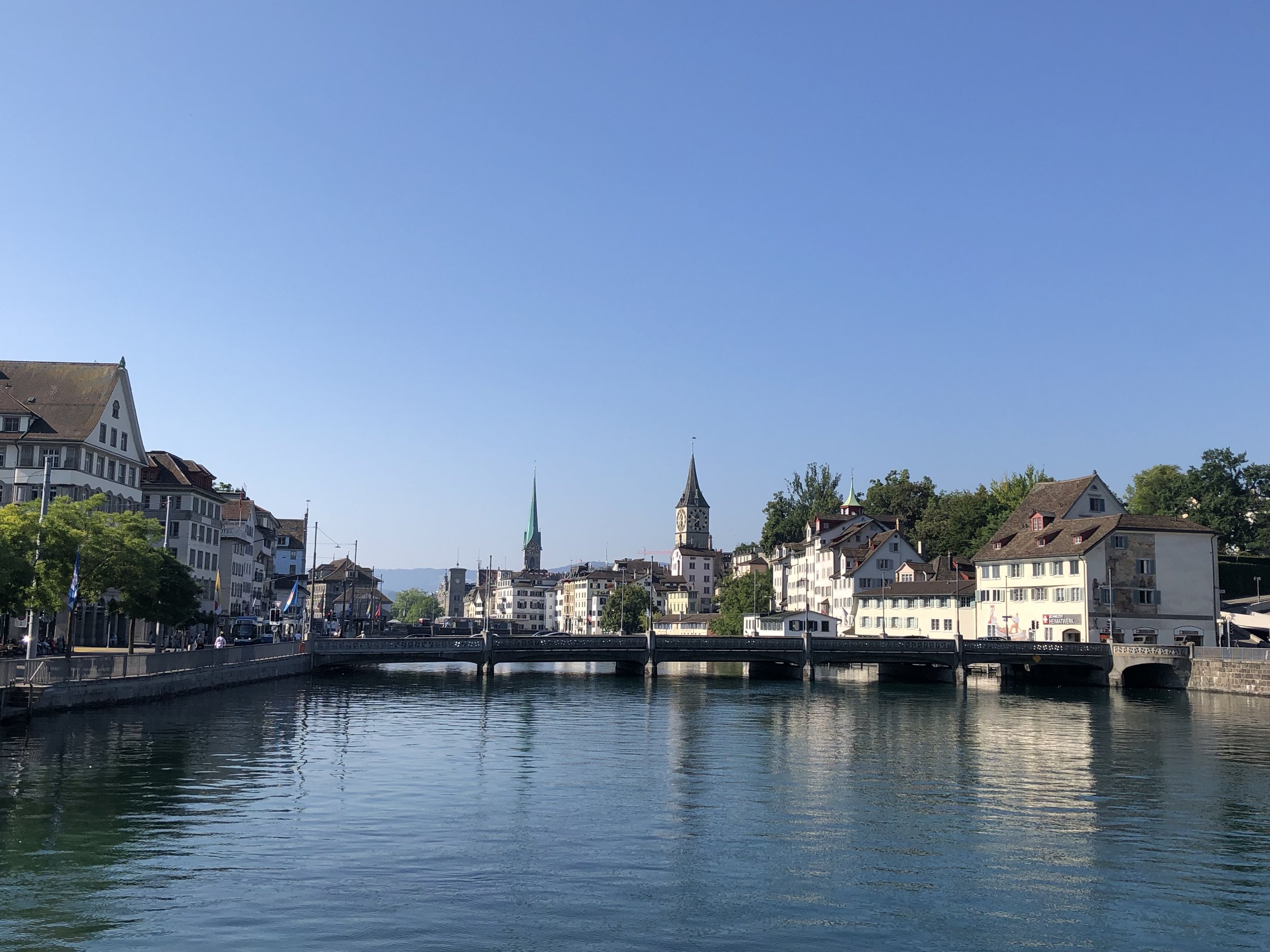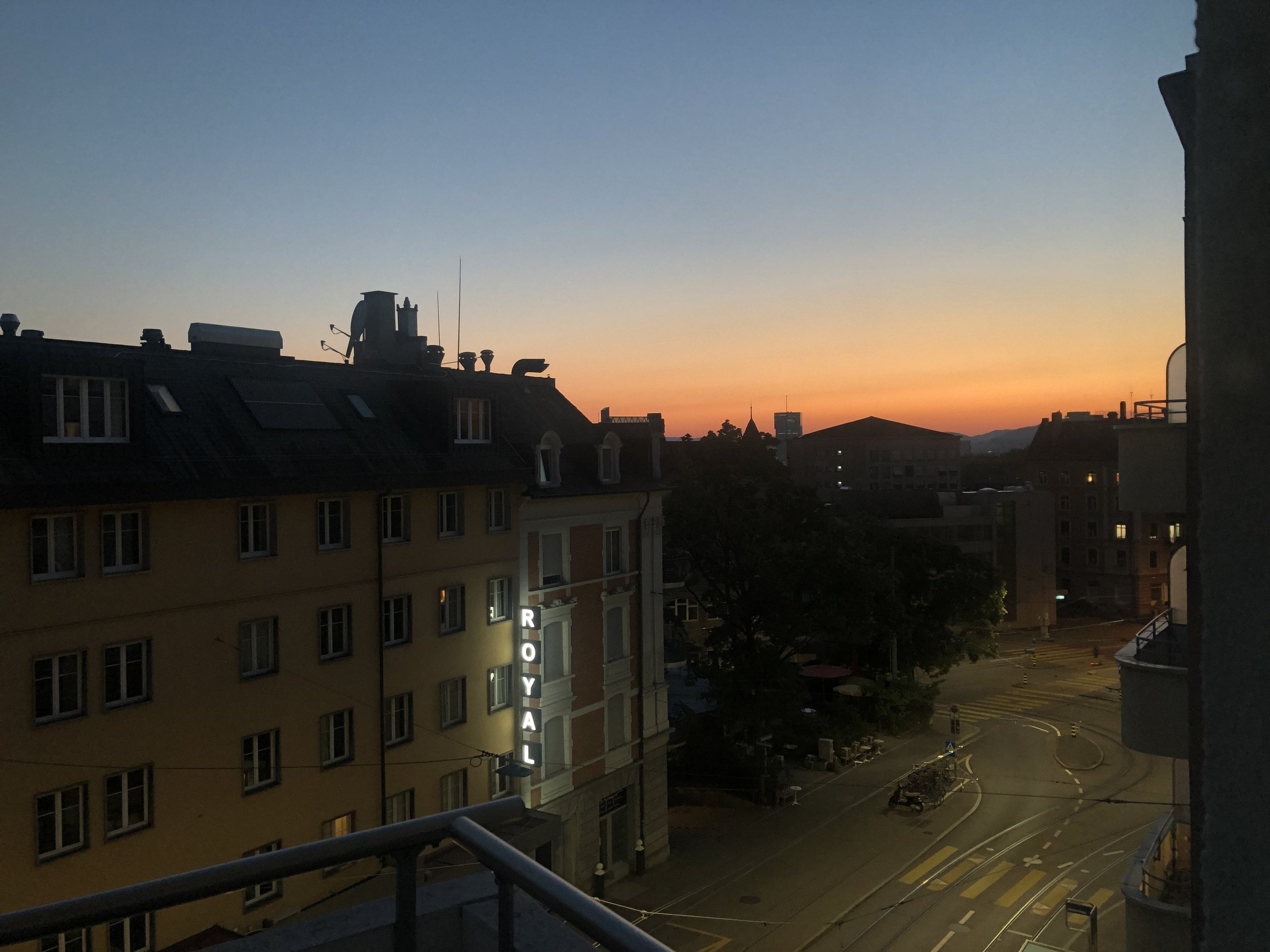Zurich: Designed Over Time
Hallo! Ace here.
Zurich, a city of chocolate, a city of watches, a city that is extremely popular—and thus—extremely expensive. But although the cost of living is high , the quality of life in Zurich is high as well. Zuri is a city that is consistently at the top of quality of life rankings compared to other cities around the world, and because of this I set to dig into what exactly makes Zurich as great of a city as it is and what other cities can learn from the cozy canton on the lake in order to make their own cities just as great.
The many lines of Zurich City… (image via ZVV)
…and the additional fare zones of the Canton
Compact and Connected
One of the many stairways in Zurich
One of the best parts of Zurich has to be the transit system. As shown in the maps above, the system is both extensive within the main city of Zurich as well as the larger surrounding metro, operating in a cross-hatch pattern that actually has a number of lines (smartly) crossing each other at multiple points around the city. The city of Zurich itself is also quite small (for comparison Zurich is just under 34 sq.mi. as compared to San Francisco’s size of 47 sq.mi.), meaning the distance one needs to cover from one end to the other is quite short.
Similar to SF there is a lot of steep terrain in the city, however it is extremely navigable with the city’s tram system. Whether from the Hauptbanhof (train station) or my hotel, the dozens of options to get from place to place meant that if I was ever waiting for a tram or bus the wait was extremely short, and depending on where I wanted to go I had multiple options to take within a short amount of time and distance from each other. In many ways this also made me more at ease during my stay: though some of the eateries and shops close earlier here than in other places, there’s no worry that you won’t make it somewhere on time simply because you happened to miss a bus.
One of the crosses where transfers between trams are quick and easy
The systems of redundancy created between the combinations of trams, trains, buses, and bike paths means that if one portion of the system goes down at any time, there are still many different options available to get where you need to go. This may seem counterintuitive to the American standard of being efficient with transportation dollars, however what this means is that if any line or route goes offline then it does cause a cascade of other issues for other routes. Funny enough, it’s how most cities already design roads for cars.
A pedestrian path between buildings in the center of Zurich
A Space for Everything
The Industriequartier
Zurich is also designed in a way that provides space for all types of activities as well as all types of modes of transportation. Even in the more industrial parts of the city, you will still find very wide sidewalks along with excellent transit access—something my own home base of Seattle is extremely lacking in our own industrial areas.
For being a fairly small city, Zurich also boasts quite a number of parks, ranging in scale from pocket parks to an extensive field like Kasernenareal in the center of town. Open space makes for both breaks from the urbanness of the metro along with places to take in fresh air surrounded by green. I can also attest to the appeal of the local beaches on a hot summer day—again, extremely accessible by both transit as well as walking.
Kasernenareal
In Zurich, providing this space for people means that no matter where you are in the city there is some activity happening and there is plenty of space for it. By encouraging people to be out and about, there is also a collective sense of safety that comes from having people on the streets. More (and wider) sidewalks along with a variety of parks and open spaces easily accessible by all residents are surefire ways to get people out and about in your town.
Simple and straightforward design
Simple and Timeless Design
It’s easy to see how the past influences newer designs in the city
Something that really struck me was that whether a building was from the 1770s or the 1970s, the architecture of Zurich is fairly simple in design. The buildings are oddly uniform in that they are made of fairly flat planes with a number of punched holes / windows that, combined with natural materials and solid colors for surfaces, means you get a lot of variety in as few design moves as possible. In many ways, what this also allows for is the things happening around the building—people, plants, public transportation—to be the main star of the show.
Color contrast takes these homes and makes them stand out in a crowd
In this way, Zurich shows that simpler can be much better. In the US, we have a lot of rules we like to put on buildings, when in reality what we should be focusing on is providing the space for the other parts of life to happen around the buildings we create.
The Altstadt of Zurich
The Trouble With Frozen Music
Zurich is an extremely beautiful city with a rich history of architecture as well as historic preservation, however the lack of housing options available in the city proper have caused the price of housing to increase steadily over the past decades. UBS ranks Zurich as one of the most overpriced housing markets in the world, which means that although the quality of life is quite high, who the quality of life is high for becomes a smaller and smaller group with each passing year.
Still, outside of allowing for more housing to be developed, Zurich has all the excellent infrastructure and services needed to service all of its citizens and to provide an excellent place for anyone to make a living. In many ways, Zurich is a great example to both learn from and also a warning, that a city needs to have dynamic housing and development policies that ensure that everyone who wants to be a part of a city has the ability to live there.






